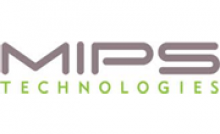MIPS aims challenge at ARM tablet dominance

Revealing a new processor design, MIPS Technologies hopes to challenge ARM's reach in the high-end mobile device market.
PC World reports that the semiconductor design company presented its new design at the Hot Chips conference in Silicon Valley on Tuesday.

Better known for its chips used in home entertainment, including televisions and Blu-ray players, MIPS chips are also featured in several tablets. Usually, their processors are found in low-end Android models sold in emerging markets -- including China and Indonesia.
However, the chip maker hopes to move up the pack with a new design called proAptiv, which implements its MIPS32 architecture.
The company claims that the proAptiv core will be half the size of ARM's anticipated Cortex-A15 CPU, but will offer the same performance -- if not more.
Considering it a direct competitor, the corporation hopes that the design will be snapped up by developers of smartphones and tablets which could compete with Apple's mobile products -- something which is not necessarily feasible in the current market.
California-based MIPS doesn't manufacture chips itself -- like ARM -- but instead licenses its designs to other companies. According to the company, the prototype will be ready for license by the end of September at the latest. However, as it takes an average of 18 months to transform a CPU design into a workable system chip, it is unlikely that smartphones or tablets will feature proAptiv for at least two years.
The chip maker expects the license fee will be lower than ARMs fees, and the smaller die size will lessen power consumption and cut silicon costs. Therefore, if the performance does come up to scratch, it could be an attract prospect for manufacturers.
Chris Rowen, founder and CTO of processor core design and license firm Tensilica told the publication:
"Building a high quality architecture -- and there's every reason to think proAptiv fits that category -- gives them a shot. But it's also the case they have to play the game around ARM's rules, and that's tough."